St. Georg: Cologne’s ‘Ravenna on the Rhine’
St. Georg in Cologne is one of the city’s twelve Romanesque churches, holding historical, architectural, and religious significance. Its construction began in 1059, and it was consecrated in 1067. The church stands on the site of a Roman guard post that controlled traffic between Cologne and Bonn during Roman times. This location links St. Georg with the deep historical roots of the city, from its Roman past through to its development during the Middle Ages. In October this year, I had the chance to visit the church and learn more about its history and architectural features. Here is a summary of what I’ve learned so far.
 St. Georg today, situated in the southern part of Cologne’s Altstadt at Waidmarkt.
St. Georg today, situated in the southern part of Cologne’s Altstadt at Waidmarkt.
 Mosaic ‘St. George and Anno II’ (1930) by Eduard Schmitz, above the entrance to the vestibule.
Mosaic ‘St. George and Anno II’ (1930) by Eduard Schmitz, above the entrance to the vestibule.
Historical background and development
Here is a summary of St. Georg’s historical background as far as I could find out. The images are taken from displays in the church.
Early development and Romanesque construction
St. Georg history dates back to the Roman era. Originally, the location hosted a military post just outside the city’s southern gate, used to monitor traffic between Cologne and Bonn. By the 4th to 7th centuries, this site saw the construction of a Caesarius Oratory, a three-aisled, flat-roofed hall with a semi-circular apse. Dedicated to Saint Caesarius of Terracina, the oratory was likely established using materials and remnants from older structures. While the exact duration of this oratory’s use is uncertain, it was possibly destroyed during the Norman invasions of 881–882, and traces of its altar were later found beneath St. Georg’s crossing.
Foundation of the collegiate chapter and construction of the basilica
In 1059, Archbishop Anno II founded a collegiate chapter at this location and initiated the construction of a new church dedicated to Saint George. Built on the oratory’s site, the church featured three aisles, a transept, three apses, and a crypt beneath the choir, supported by columns — some of which were repurposed Roman remains. The church became a significant ecclesiastical institution with 20 prebends, albeit one of the smaller chapters in Cologne. Along with its parish duties, it held authority over nearby churches, such as St. Jakob and St. Maria Lyskirchen, in Cologne’s southern suburbs.
 Floor plan of the church of Anno II (reconstruction by A. Verbeek).
Floor plan of the church of Anno II (reconstruction by A. Verbeek).
Around 1067, the church gained its most notable artifact: a life-sized willow-wood crucifix, known as the triumphal cross, believed to be the only surviving movable relic from Anno II’s original structure. This cross, likely belonging to the main altar, remains one of Cologne’s significant religious artifacts and is currently housed as a replica in the church, while the original is preserved in the Museum Schnütgen.
 Crypt of the Annonian church to the northeast (Photo Tietzenthaler 1938/39).
Crypt of the Annonian church to the northeast (Photo Tietzenthaler 1938/39).
Around 1150, the basilica underwent significant structural changes. The original wooden ceiling was replaced with stone cross-vaulting, and new support pillars were added in the nave, dividing the central space into nearly square bays. The aisles retained their division into five smaller bays, also vaulted in stone. The changes included the relocation and redesign of the clerestory windows to a paired arrangement, while the chancel’s arcades were closed and reconfigured to create a more robust structure. These Romanesque modifications, combined with the church’s majestic basilican form, earned it the nickname ‘Ravenna on the Rhine’, reflecting its architectural similarity to the early Christian basilicas of Ravenna, Italy.
 Left: Staufer west choir, ground plan of the first floor (Kunstdenkmäler der Stadt Köln). - Center: Longitudinal section through the Staufer west choir (Kunstdenkmäler der Stadt Köln). - Right: Reconstruction of the Staufer west choir. View from the southwest (H.E.Kubach, A. Verbeek).
Left: Staufer west choir, ground plan of the first floor (Kunstdenkmäler der Stadt Köln). - Center: Longitudinal section through the Staufer west choir (Kunstdenkmäler der Stadt Köln). - Right: Reconstruction of the Staufer west choir. View from the southwest (H.E.Kubach, A. Verbeek).
From 1180 to 1188, a new west choir was constructed, featuring walls over three meters thick to support a central tower and two flank towers, which were intended to crown the west end. However, these towers were never completed, leaving the west choir with only a low wooden roof and a dome-like interior structure. This west choir, accessed from the nave by a broad staircase, served multiple functions, including lay services and judicial proceedings. The basilica’s design drew from influences seen in the three-towered churches of the Rhineland, such as Maria Laach, as well as the west choir halls in Liège and Maastricht.
By the late 12th century, St. Georg received new frescoes, parts of which remain visible in the choir. Around 1230, a late Romanesque construction was added above the southern aisle, although this section disappeared before the 19th century. In 1500, a late-Gothic porch with an elevated gallery was constructed outside the crypt’s southern entrance, though it was moved outdoors during renovations in 1930 and destroyed during World War II.
Renaissance and Baroque transformations
The Renaissance and Baroque periods brought further changes to St. Georg. In 1536, a two-story Renaissance portal was added to the southern entrance, destroyed in 1945. A wall epitaph for Wilhelm Wyschius, depicting the Crucifixion, was installed in the choir in 1545. Around 1551, a two-story hall was built to connect St. Georg to the nearby parish church of St. Jakob, with richly adorned ribbed vaults and carvings, including scenes of David with his harp, Samson with the lion, and the Fall of Man. The sacraments house, crafted in Renaissance style, was added in 1556 and decorated with scenes of the Last Supper and the Resurrection, a donation from Archbishop Adolf of Schauenburg.

St. George (left) and the neighboring parish church of St. Jacob (right). Detail from Arnbold Mercator’s bird’s eye view from 1570/71.
 View from the south. Drawing by Justus Vinckeboons 1664/65.
View from the south. Drawing by Justus Vinckeboons 1664/65.
Around 1700, a Baroque slate dome with an onion-shaped finial was installed over the west choir, marking a significant aesthetic shift. In the 1770s, Johann Martin Metz painted floral and vine motifs on the church’s interior, while the clerestory windows were expanded, and an organ was installed between the nave and the west choir.
Following the secularization of church property in 1802, the St. Georg chapter was dissolved, and St. Georg was integrated into the parish of St. Jakob, which was subsequently demolished in 1825. In the early 19th century, restoration work stabilized the church, including floor adjustments and the removal of Baroque features, replaced by a new altar with neo-Romanesque elements designed by Ernst Zwirner. A more extensive restoration occurred in the late 19th century under Heinrich Nagelschmidt, including new vaulting and frescoes by Matthias Göbbels.
 St. Jacob and St. George from the northwest. Lithograph by A. Wünsch 1827.
St. Jacob and St. George from the northwest. Lithograph by A. Wünsch 1827.
Restoration and preservation in the 20th century
The early 20th century saw additional restoration efforts, particularly between 1927 and 1931. Led by Wilhelm Hartmann and Wilhelm Schorn, these restorations reinstated many of the church’s 12th-century Romanesque features. Jan Thorn Prikker contributed 35 stained glass windows, and a new Ehrenfriedhof, or memorial cemetery, was designed beside the church.

Interior view to the southeast. Room setting and high altar around 1910 (photo before 1927).


Left: View from the southwest (Photo August Sander around 1935). – Right: View from the northwest (Photo August Kreyenkamp around 1930). In front, you can see the Hermann-Josef fountain, completed in 1894 (more details below).
However, St. Georg suffered extensive damage during the air raids of March 2–3, 1945, losing most of its roofs, vaults, and central sections. Reconstruction began in 1956, with architects Wilhelm Hartmann and Willy Weyres overseeing the rebuilding. The west choir’s Baroque dome was not restored, but Thorn Prikker’s stained glass windows were recreated. By 1964, most of the basilica had been restored to its pre-war form.


Left: View from the northeast after the destruction of the war (photo 1946). – Right: View of the nave from the southwest, after the destruction of the war (photo 1947).
From 2000 to 2002, another renovation under Hansjosef Schäfer refined the interior and reorganized historical elements, adding a wooden altar by Winfried Lucassen in the west choir. Today, St. Georg stands as a remarkable testament to Cologne’s religious and architectural history, embodying the evolution of Romanesque design across centuries.
Architecture
St. Georg is a modestly styled three-aisled basilica that exudes Romanesque simplicity. Its structure includes a northern porch and a cubic western choir built in the Staufen period. The church’s most striking feature is its use of spolia — reused Roman columns — which support the crypt beneath the choir. The crypt is divided into five sections by these columns, a rare feature in Cologne’s Romanesque churches. The ceiling of the nave is an impressive example of 12th-century cross-vaulting, and the windows of the clerestory were modified during this period to allow more light into the church.
 View from the south in 1916 (Kunstdenkmäler der Stadt Köln).
View from the south in 1916 (Kunstdenkmäler der Stadt Köln).
 Ground plan (top) and longitudinal section (bottom), by W. Schorn and A. Verbeek 1930/40.
Ground plan (top) and longitudinal section (bottom), by W. Schorn and A. Verbeek 1930/40.
The church’s uncompleted western tower was originally planned to be a grand structure, but it was never fully realized. Instead, a modest hipped roof was installed after World War II to replace the destroyed Baroque dome. The interior, while mostly whitewashed, still retains some of its Romanesque ornamentation, including capitals decorated with biblical scenes such as Samson and the Lion.
 Left: Southern porch from 1535 (photo around 1939). - Right: Southern porch from 1536, section and view (Kunstdenkmäler der Stadt Köln).
Left: Southern porch from 1535 (photo around 1939). - Right: Southern porch from 1536, section and view (Kunstdenkmäler der Stadt Köln).
Religious and cultural significance
Over the centuries, St. Georg has been a central part of Cologne’s Christian life. Archbishop Anno II brought a relic of St. George from the nearby St. Pantaleon, enhancing its spiritual prestige. The church’s long history as both a collegiate and later parish church reflects the important role it played in the spiritual life of the city. Additionally, St. Georg’s architectural developments – from Roman to Romanesque, and later Baroque influences – mirror the city’s own growth and transformation over the centuries.
The 20th-century renovations brought new life to the church, with notable additions such as stained-glass windows by the Dutch artist Jan Thorn Prikker, adding a modern aesthetic to the historic interior. St. Georg continues to serve as an active parish church and is supported by the Förderverein Romanische Kirchen Köln, which helps preserve Cologne’s Romanesque heritage.
Impressions of the church
In addition to the already shown images, here are some more impressions from St. Georg from a visit in October 2024. Most of the image descriptions are based on the information found on the website of the Förderverein Romanische Kirchen Kölnꜛ
 St. Georg with part of the Waidmarkt in the foreground. On the right, hidden behind the tree leaves, the Hermann-Josef fountain (more details below).
St. Georg with part of the Waidmarkt in the foreground. On the right, hidden behind the tree leaves, the Hermann-Josef fountain (more details below).
 The old masonry of the church with a window decorated with stained glass.
The old masonry of the church with a window decorated with stained glass.
 The layers of history of the church, visible in its masonry.
The layers of history of the church, visible in its masonry.
Northern vestibule
The interior of the northern vestibule holds quite a few interesting features. The masonry of the walls and the ceiling is visible, showing the different layers of history the church has gone through. Old wall reliefs are also visible. Additionally, two interesting statues decorate the today’s main entrance of the church.
 Entrance to the vestibule of St. Georg with a mosaic of St. George and Anno II and the stone relief of Mary with the infant Jesus, Anno II, and St. George (only partially visible; see full image below).
Entrance to the vestibule of St. Georg with a mosaic of St. George and Anno II and the stone relief of Mary with the infant Jesus, Anno II, and St. George (only partially visible; see full image below).
 Stone relief of Mary with the infant Jesus (center), Anno II (left) and St. George (right), 1930, by Eduard Schmitz (1897-1965), above the entrance to the vestibule.
Stone relief of Mary with the infant Jesus (center), Anno II (left) and St. George (right), 1930, by Eduard Schmitz (1897-1965), above the entrance to the vestibule.
 Interior of the northern vestibule.
Interior of the northern vestibule.
 Interior of the northern vestibule, view to the entrance of the nave.
Interior of the northern vestibule, view to the entrance of the nave.
 Modern (?) stained glass window in the northern vestibule.
Modern (?) stained glass window in the northern vestibule.
Wall reliefs
Unfortunately, I could not find any information about the wall reliefs in the northern vestibule. They are likely from the medieval period and depict various scenes and motifs. However, I cannot approve this information, and it is only a guess based on the style and age of the church.
 Engraved cross on the base of a ceiling arch.
Engraved cross on the base of a ceiling arch.
 Relief with figurative scene (man riding a horse?).
Relief with figurative scene (man riding a horse?).
 Relief with figurative scene, most likely Adam and Eve surrounding the tree of knowledge.
Relief with figurative scene, most likely Adam and Eve surrounding the tree of knowledge.
 Relief with figurative scene (artist with a harp?).
Relief with figurative scene (artist with a harp?).
Statue of St. Jude Thaddeus
The vestibule houses a statue of St. Jude Thaddeus, the Apostle. The figure is hardly significant as an object of art, but rather as a testimony to piety. The statue is surrounded by small votives: Small stone tablets are attached to the wall, inscribed with requests for help or thanks for help received. At the end of the 19th century, a rapidly spreading cult tradition began in Vienna. St. Jude Thaddeus was invoked as a patron saint, especially in difficult situations. Soon there were statues of St. Thaddeus in all Catholic churches, where the faithful donated votives and lit candles. In Cologne, the figure in St. George’s remains the best known, to which the faithful come with their intentions – especially when in distress – to donate lights and have tablets placed as a sign of petition and thanksgiving, thus expressing their spiritual connection with God and the saint.
 Statue of St. Jude Thaddeus, end of the 19th century.
Statue of St. Jude Thaddeus, end of the 19th century.
 Statue of St. Jude Thaddeus (detail).
Statue of St. Jude Thaddeus (detail).
 Votive tablets, each with a request for help or thanks for help received.
Votive tablets, each with a request for help or thanks for help received.
 Votive tablets, each with a request for help or thanks for help received.
Votive tablets, each with a request for help or thanks for help received.
 Devotion to St. Jude Thaddeus.
Devotion to St. Jude Thaddeus.
Christ on the Mount of Olives
The second significant and prominent statue in the northern vestibule is a stone sculpture of Christ on the Mount of Olives from the 16th century. The sculpture is a depiction of Jesus Christ praying on the Mount of Olives, a scene from the New Testament. The sculpture is made of stone and is a remarkable example of religious art from the 16th century. The sculpture is a powerful representation of the suffering and sacrifice of Jesus Christ, capturing the emotional intensity of the moment.
 Stone sculpture of Christ on the Mount of Olives, 16th c, in the northern vestibule.
Stone sculpture of Christ on the Mount of Olives, 16th c, in the northern vestibule.
Cross from around 1440
The vestibule also houses a cross from around 1440, made of lime wood. It is assumed that it originates from the neighboring parish church of St. Jakob and came to St. Georg in the course of the demolition of this church (1825). Today, the life-size, full-round carved figure of Christ is dominated by a slightly yellowish, late medieval color scheme (a dark grey layer of paint was removed in 1975/76). The body is depicted in a strictly upright posture, only the head with the crown of thorns has sunk to the right on the chest. The modeling of the body speaks of a naturalistic conception. Several rivulets of blood run down the body of the crucified man from the side wound. Like the Crucifixus Dolorosus in the west building, this cross also represents the three-nail type. The crown of thorns, the eyes half-opened in suffering, the scanty loincloth and the head tilted to the right are characteristics of the depiction of the crucified in late Gothic painting and wood sculpture.
 Cross, around 1440, lime wood.
Cross, around 1440, lime wood.

 Cross, around 1440, lime wood (detail).
Cross, around 1440, lime wood (detail).
Cemetery
In the inner courtyard of St. Georg, a cemetery is located, which is accessible through a gate in the northern vestibule.
 Cemetery in the inner courtyard.
Cemetery in the inner courtyard.
Nave
The main characteristic of the nave are its Romanesque elements such as the vaulted ceilings and the Romanesque arches and columns.
 Nave with view on the tabernacle.
Nave with view on the tabernacle.
Staufer west choir
The Staufers’ west choir is a significant part of the church, with a baptismal font, a forked crucifix from the 13th and 14th centuries, and statues of St. Peter and St. Paul from the 18th century. The choir is a beautiful example of Romanesque architecture, with its vaulted ceilings and stained glass windows.
 Staufer west choir, seen from the nave.
Staufer west choir, seen from the nave.
 Baptismal font and forked crucifix in the Staufer west choir.
Baptismal font and forked crucifix in the Staufer west choir.
 Stained glass in the west choir.
Stained glass in the west choir.
The baptismal font is made of trachyte and has a vat shape common in the Rhineland. It most likely belongs to the period of the early baptistery west choir. An arched arcade on twelve columns surrounds the font. A pigeon decorates the top of the font, symbolizing the Holy Spirit. Today, fountain stands in this part of the church, but it is not clear whether it was part of the original medieval furnishings or whether it may have come from the neighboring parish church of St. Jacob.

 Baptismal font, around 1240, trachyte, belongs to the period of the early baptistery west choir.
Baptismal font, around 1240, trachyte, belongs to the period of the early baptistery west choir.
The forked crucifix is a late example of the crucifixus dolorosus, depicting the crucified as a suffering person in a particularly haunting way. Under the influence of mysticism, religious movements of the 13th/14th century had developed a devotion to the Passion that led to the formation of this cross’ pictorial form. Other early examples of this type can be found in the Cologne churches of St. Maria im Kapitol (1304) and St. Severin (1330/40). It is unclear whether the crucifixus dolorosus was part of the original inventory. It may have come from the now demolished Carmelite church of St. Mary of Mount Carmel in the upper Severinstraße. The life-size body of the crucified man, gaunt and emaciated, hangs from a (modern) forked cross. The body is attached to three points of this cross (three-nail type). The head, with a heavy crown of thorns, has sunk to the right onto the chest. The entire body is covered with scourge wounds from which long rivulets of blood run down. Only a loincloth covers the maimed body, marked by agonizing death. During a restoration of the cross in 1953/54, the Gothic coloring, which had been preserved in large parts, was uncovered. It turned out that the body was originally painted in a light tone and had light red traces of blood; the crown of thorns was painted green, the loincloth white with golden stripes on the seams.
 Forked crucifix, around 1380, walnut.
Forked crucifix, around 1380, walnut.

 Statue of St. Peter, 2nd half 18th century, wood. Peter holds a key in his right hand.
Statue of St. Peter, 2nd half 18th century, wood. Peter holds a key in his right hand.

 Statue of St. Paul, 2nd half 18th century, wood. Paul is holding a sword in his left hand and a book in his right hand.
Statue of St. Paul, 2nd half 18th century, wood. Paul is holding a sword in his left hand and a book in his right hand.
 Forked crucifix and the statue of St. Peter.
Forked crucifix and the statue of St. Peter.

 Light dispenser, decorated with the Christ mono-gram “XP” (Chi-Rho).
Light dispenser, decorated with the Christ mono-gram “XP” (Chi-Rho).
Altar area and east choir
The altar is located in the east choir, which is separated from the nave by an increased floor level.
The chancel is decorated with a copy of an early Romanesque crucifix from around 1070 made of willow wood. The original is now in the Museum Schnütgen. It is an important work of medieval art from Cologne. The image is considered part of the church’s old furnishings. It was probably created for the Annonian (Anno II) foundation building, which was probably consecrated in 1067. The cross would therefore be the last evidence of the original furnishings.
The original, which was found in the crypt of St. George’s in 1921, is only preserved as a torso. Both arms and the feet are missing, which have been added to the copy. The body of the crucified man is depicted in a bent posture. The loincloth falls down onto the thin legs in hard, parallel folds. Only a few lines divide the naked upper body. Since its rediscovery, the stern, angularly carved face, framed by parted hair falling down in side strands, has been considered particularly impressive. An opening at the back of the head, which could once be closed, was presumably used to store relics.
 East choir and altar area, reconstruction of the St. George crucifix.
East choir and altar area, reconstruction of the St. George crucifix.
Notable art and relics
Tabernacle
A tabernacle is a box or cupboard in which the Eucharist is stored, and, thus, a central element of the Catholic liturgy.
Triptych by Bartholomew Bryn
The triptych is one of the last works by the elder Bartholomäus Bruyn, which he probably conceived and began, but which was completed in his workshop after his death in 1555. The winged retable was donated by Johann Gebhard Graf von Mansfeld († 1562), who was provost of St. George’s Abbey from 1548 to 1558 and is depicted as such on the central panel. As he became Archbishop of Cologne in 1558 and Bartholomäus Bruyn died in 1555, the altarpiece must have been made between 1555 and 1558. It was probably executed in the workshop by Bruyn’s sons, Arndt († 1577) and Bartholomäus the Younger († around 1607/10). The original location in the church is unknown. The central panel depicts the Lamentation of Christ. St. George in armor stands next to this pyramidal group. He commends the donor kneeling before him. The city of Jerusalem can be seen in the background. The left wing shows the Carrying of the Cross, the right wing the Resurrection; when open, this results in a sequence of three scenes from the Passion of Christ. Two saints are depicted on each of the outer sides, painted in grisaille: Peter and Anno (the founder of St. George’s Abbey) on the left and Caesarius and George on the right. Bartholomäus Bruyn the Elder is considered the only outstanding Cologne painter of the 16th century. His numerous portraits of members of the Cologne patriciate and the clergy in particular, as well as his altarpieces, show that he was inspired by Dutch Renaissance painting.
 Triptych by Bartholomew Bryn, before 1558, oil on wood.
Triptych by Bartholomew Bryn, before 1558, oil on wood.
 Triptych by Bartholomew Bryn (middle panel).
Triptych by Bartholomew Bryn (middle panel).
 Triptych by Bartholomew Bryn (middle panel, detail).
Triptych by Bartholomew Bryn (middle panel, detail).
 Triptych by Bartholomew Bryn (left panel).
Triptych by Bartholomew Bryn (left panel).
 Triptych by Bartholomew Bryn (right panel).
Triptych by Bartholomew Bryn (right panel).
 Triptych by Bartholomew Bryn (right panelm detail).
Triptych by Bartholomew Bryn (right panelm detail).
 Triptych by Bartholomew Bryn (middle panelm detail).
Triptych by Bartholomew Bryn (middle panelm detail).
 Triptych by Bartholomew Bryn (middle panelm detail).
Triptych by Bartholomew Bryn (middle panelm detail).
Madonna figure
The smaller than life-size Madonna figure is not part of the old furnishings of St. George’s Church. It comes from Habbelrath in the Erft district. The sculpture was probably carved by the Dutch (?) artist Jan van Rick on behalf of the Cistercian monastery of Bottenbroich, where it was previously located. Van Rick was a pupil of Johann Franz van Helmont, one of the most prominent representatives of Baroque sculpture in Cologne. Mary is depicted as the Immaculata, the Immaculately Conceived Mother of God. This type of image was developed from the end of the 15th century and was one of the most widespread images of the Virgin Mary until the 18th century. Mary stands on a cloud bank and steps with her foot on the head of the serpent as the embodiment of evil. She holds a lily sceptre in her right hand and places her left hand to her chest in a devoted gesture. The white robe with golden hems is generously draped in billowing panels, yet pleated in small details. The delicately drawn features of Mary’s face and the precious gestures as well as the differentiated treatment of the robe identify the figure as a sophisticated late Baroque work.
 Madonna figure, Jan van Rick (?), early 18th century, limewood.
Madonna figure, Jan van Rick (?), early 18th century, limewood.
 Madonna figure, Jan van Rick (?), early 18th century, limewood.
Madonna figure, Jan van Rick (?), early 18th century, limewood.
Treasury
Among others, St. Georg’s treasury contains three wooden busts of bishops from the late 18th century. They are silver-plated (second version), but originally gilded. Of the three busts, the one on the left depicts St. Anno, originally recognizable by the model of St. George’s Church, which he carried in his right hand and has been lost due to theft since 1980. The other two bishops cannot be named. Stylistically, the busts are similar to the silver statuettes of Cologne bishops on the Engelbert shrine in Cologne Cathedral (1633), which are based on models by Jeremias Geisselbrunn. The three busts were probably created at the same time, although they differ in their younger and older styles. The dating to the third quarter of the 18th century can be deduced from the rocaille ornament engraved into the original gilding on the back of the mitre on the right-hand figure.
 Treasury, three busts of bishops, Cologne, 3rd quarter of the 18th century, walnut, silver-plated (second version), originally gilded
Treasury, three busts of bishops, Cologne, 3rd quarter of the 18th century, walnut, silver-plated (second version), originally gilded
The treasury also contains a late Gothic bust of St. Pancras and an arm reliquary. The so-called St. George’s Arm is the only surviving main relic of St. George. The reliquary dates from the Baroque period.
 Late Gothic bust of St. Pancras and an arm reliquary.
Late Gothic bust of St. Pancras and an arm reliquary.
Mosaic of the Mother of God
The Madonna mosaic shows Mary presenting the Christ child. The Madonna, sitting upright, takes up most of the picture surface. A multicolored nimbus hangs behind her head. The Christ child stands on her right flat hand with his hands raised. Turquoise, dark blue, red and white are the dominant colors. The strongly stylized formal language is based on Italian trecento painting, which Thorn Prikker had studied on a trip to Italy in 1906. At that time, he also studied Byzantine and early Christian mosaic art intensively. The inscription in the lower part of the panel “NOS CUM PROLE / PIA BENEDICAT / VIRGO MARIA” refers to the function of the mosaic as a devotional image. The mosaic was purchased for St. George’s in 1987 with a grant from the Förderverein Romanische Kirchen.

 Mosaic of the Mother of God (1913) by Jan Thorn-Prikker.
Mosaic of the Mother of God (1913) by Jan Thorn-Prikker.
Hermann-Josef fountain
Just in front of the church at Cologne’s Waidmarkt square, you will find the Hermann-Josef Fountain. It stands as both a historical and artistic monument, blending local legend, religious symbolism, and a careful architectural dialogue with the surrounding Romanesque heritage. Unveiled in 1894 and designed by Cologne’s prominent sculptor Wilhelm Albermann, this fountain was a gift from the Cologne Beautification Society (‘Kölner Verschönerungsverein’), whose mission was to enhance the city’s public spaces and honor its cultural history. – The description of the fountain could have ended here. However, I discovered that the fountain’s design is rich with allegorical meaning and symbolism. So, I thought, it’s worth exploring the deeper layers of this artistic creation.
 Hermann-Josef fountain, donated by the Cologne Beautification Association in 1894, is situated in front of the church at Cologne’s Waidmarkt square.
Hermann-Josef fountain, donated by the Cologne Beautification Association in 1894, is situated in front of the church at Cologne’s Waidmarkt square.
Creation and historical background
In the late 19th century, Cologne’s Beautification Society initiated a series of public art projects aimed at revitalizing city squares and beautifying communal spaces such as the Jan von Werth fountain at the Alter Markt. To ensure the new fountain would serve as a striking feature at the Waidmarkt’s entrance, the society specified certain criteria, including local stone materials, and design proposals that would reflect Cologne’s cultural identity. In 1893, the society commissioned Wilhelm Albermann, a famous sculptor of the time, to create a fountain. Albermann completed the fountain by September 1894, at which point it was gifted to the city.
 Inscription of the Cologne Beautification Association at the fountain. The assiciation already commissioned the Jan von Werth fountain at the Alter Markt.
Inscription of the Cologne Beautification Association at the fountain. The assiciation already commissioned the Jan von Werth fountain at the Alter Markt.
Tragically, the fountain sustained damage during World War II, with a bomb blast in 1945 dislodging parts of its structure. Efforts to demolish the damaged fountain were thwarted by preservationists, leading to its restoration in 1954–1955, albeit in a simplified form that omitted several original features.
Design and symbolism
The fountain incorporates rich allegorical themes and multi-layered symbolism, reflecting both the sacred and the mundane aspects of life:
Allegorical figures
The lower basin of the fountain is shaped in a cloverleaf form, embodying Albermann’s intent to merge decorative design with symbolic meaning. On each corner of this basin, Albermann has sculpted pairs of boys engaged in playful but competitive scenes with various animals. Each scene, representing one of the four classical elements, carries a distinct title:
- “Struggle over a Dog” – Symbolizing Earth, this scene shows two boys vying for control over a dog, representing grounded, earthly desires and attachments.
- “Struggle over a Fish” – Representing Water, this pair grapples with a fish, an animal slipping away from their grasp, symbolizing the elusive nature of satisfaction in material pursuits.
- “Struggle over an Eagle” – Symbolizing Air, this scene captures the boys reaching for an eagle, a creature symbolizing lofty ambitions or ideals, which often remain beyond reach.
- “Struggle over a Crab” – Representing Fire, one boy is pinched by the crab in his hand, reflecting the dangers and volatility associated with fiery passions.
Through their symbolism, these scenes underscore the futility of human struggles over worldly possessions and fleeting desires. Albermann’s design combines folk elements with Romanesque stylistic influences, connecting the viewer with Cologne’s medieval heritage and its moral lessons on the transitory nature of material pursuits.
 One of the scenes at the lower basin of the fountain.
One of the scenes at the lower basin of the fountain.
Central column and sacred figures
Rising from the lower basin is an intricately carved octagonal column, which mirrors architectural elements found in medieval church towers. This column serves as the pedestal for the central figures – a serene representation of the Virgin Mary holding the Christ Child, with Hermann Joseph kneeling before them. Known as the ‘Apple Saint’ (‘Apfelheiliger’), Hermann Joseph is depicted offering an apple to the Christ Child, a gesture rooted in his legendary devotion to the Virgin Mary. According to tradition, the Christ Child graciously accepted this humble offering, symbolizing the saint’s pure-hearted piety and commitment to spiritual devotion over worldly ambition.
 Virgin Mary holding the Christ Child, with Hermann Joseph kneeling before them.
Virgin Mary holding the Christ Child, with Hermann Joseph kneeling before them.
The column’s form and height serve as an axis that visually elevates these holy figures above the earthly scenes below, symbolizing the spiritual realm that Hermann Joseph aspired to reach. This visual distinction emphasizes the fountain’s overarching theme: while the base represents the transient struggles of earthly life, the figures at the top symbolize the spiritual rewards of humility and faith. Albermann’s choice of Romanesque motifs, coupled with naturalistic details in the figures’ faces and gestures, creates a striking synthesis of sacred and folk art.
 Water spouts in the form of lion heads.
Water spouts in the form of lion heads.
Architectural and artistic influences
The Hermann-Josef fountain combines elements from various architectural styles, with Albermann drawing on Romanesque, Renaissance, and Nazarenist influences. The fountain’s dolphin and lion-head spouts recall Renaissance water features, while the column’s simplicity and its four supporting pillars are distinctly Romanesque, tying the design to Cologne’s ecclesiastical heritage. The fountain’s base, with its symbolic elements, reflects Nazarenist influences, an artistic movement that sought to revive religious art and spirituality. Albermann’s work resonates with this tradition, especially in its didactic approach to illustrating moral and spiritual lessons.
 Hermann-Josef fountain, side view.
Hermann-Josef fountain, side view.
The fountain’s octagonal column, with its resemblance to Romanesque church towers, and its use of allegorical animal figures connect the fountain to St. Georg and other nearby Romanesque structures, visually linking it to the architectural heritage of Cologne’s old city. Albermann’s design was praised as one of his finest achievements, capturing both the civic pride of Cologne and the moral teachings cherished by its citizens. Though simplified after its post-war restoration, the fountain remains a significant symbol of Cologne’s resilience and devotion, harmonizing public space with the city’s spiritual and historical legacy.
Conclusion
St. Georg stands as a vital piece of Cologne’s religious and architectural heritage, embodying centuries of history from its Roman foundations to its Romanesque grandeur. While it is a place of spiritual significance, it also serves as a witness to the city’s cultural legacy. The church’s architectural features, historical transformations, and ongoing role in the community make it a living link to Cologne’s past and present, inviting everyone to explore its rich art and history with thoughtfulness and respect.
References and further reading
- Wikipedia article on St. Georgꜛ
- Website of St. Georg at the Förderverein Romanische Kirchen Köln e. V.ꜛ
- Website of St. Georgꜛ
- Manfred Becker-Huberti, Günter A. Menne, Die Kölner Kirchen, 2004, J. P. Bachem Verlag, ISBN: 3-7616-1731-3
- Jürgen Kaiser, Florian Monheim, Die großen romanischen Kirchen in Köln, 2017, Greven Verlag, ISBN: 9783774306875
- Ulrich Krings, Otmar Schwab, Köln, die romanischen Kirchen - Zerstörung und Wiederherstellung, 2007, Bachem, ISBN: 9783761619643
- Hiltrud Kier, Die Romanischen Kirchen in Köln, 2014, Hrsg.: Förderverein Romanische Kirchen Köln e. V. 2. Auflage, ISBN: 978-3-7616-2842-3
- Wikipeida article on the Hermann-Josef fountainꜛ

















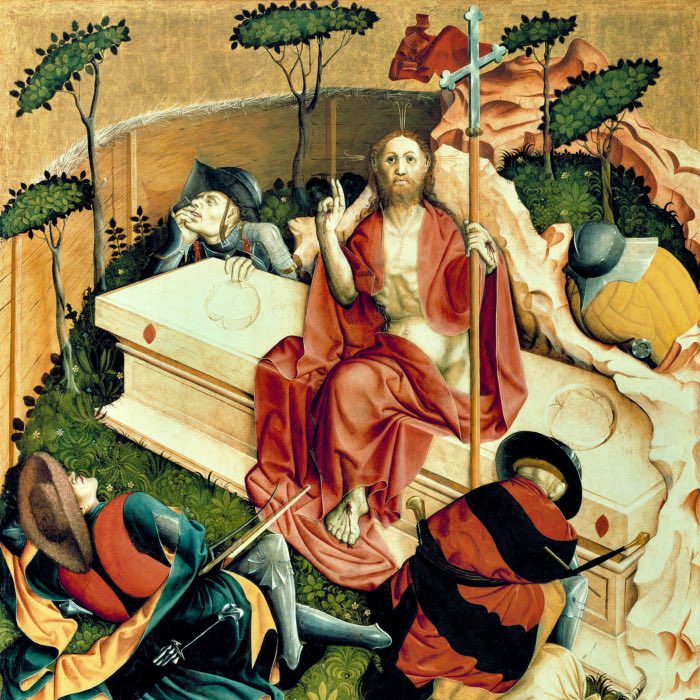

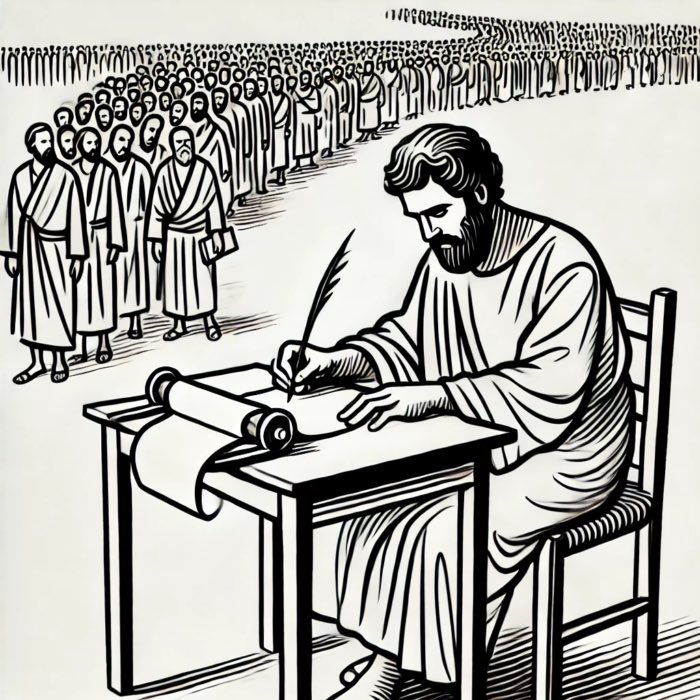
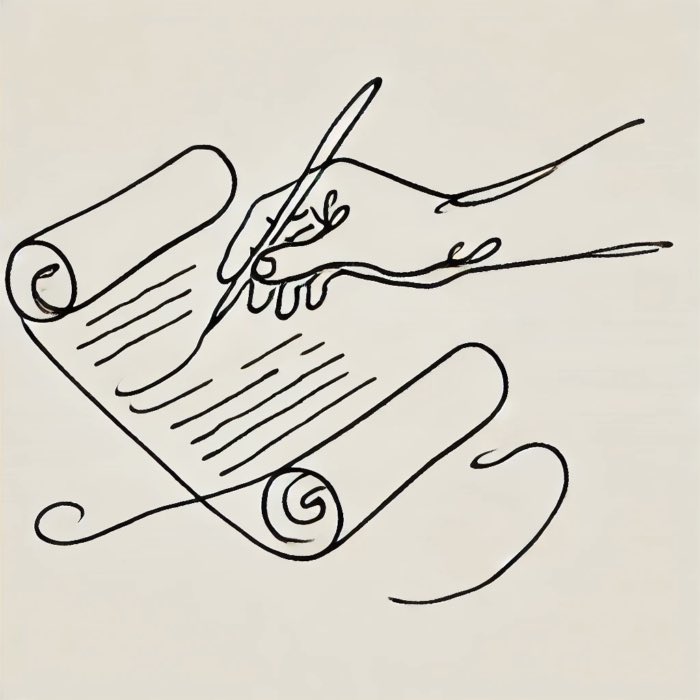

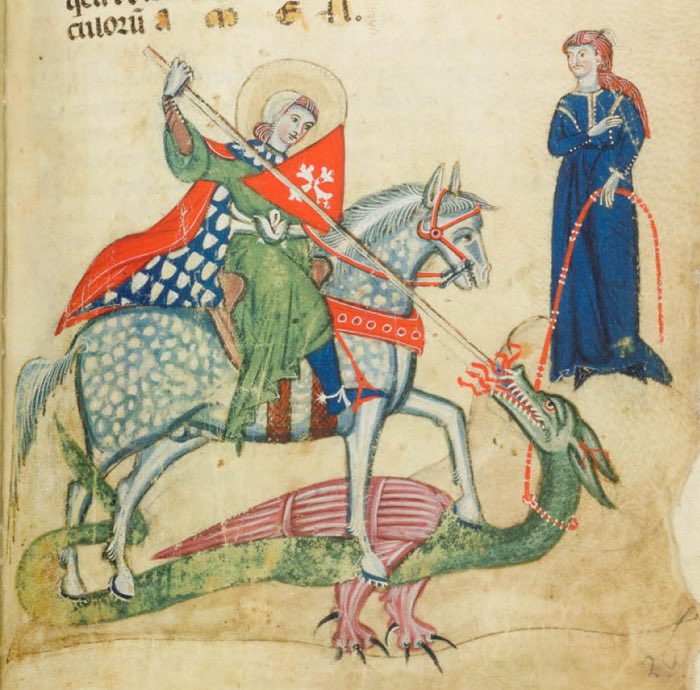



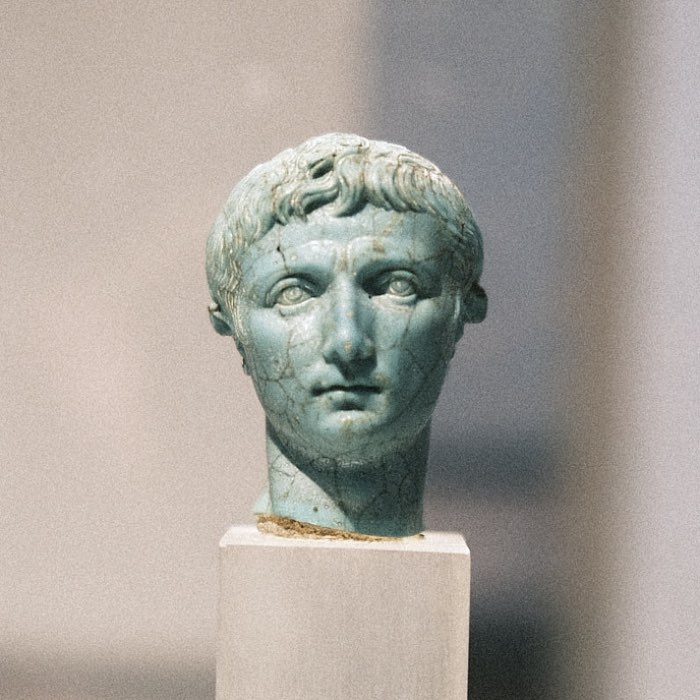
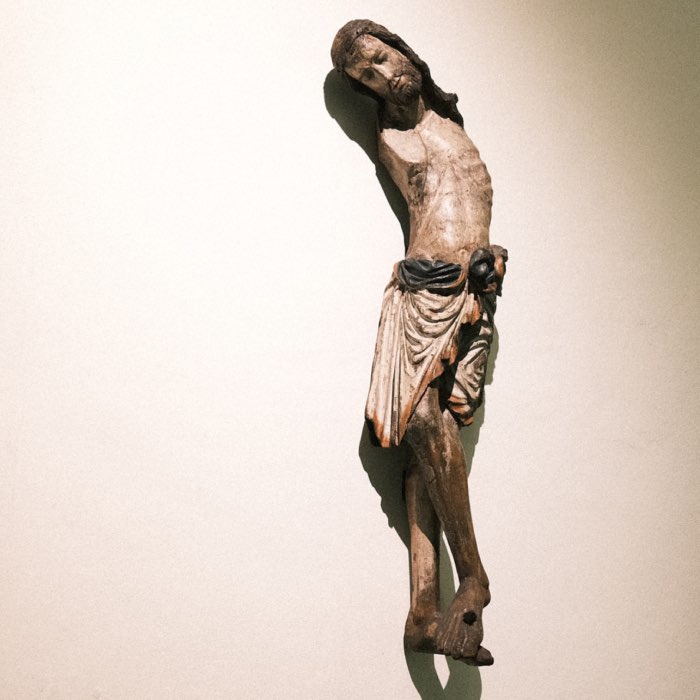
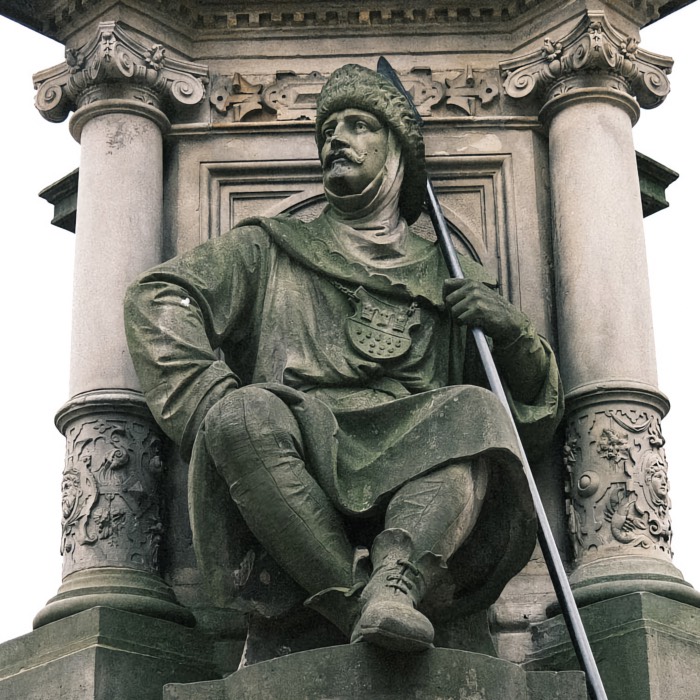
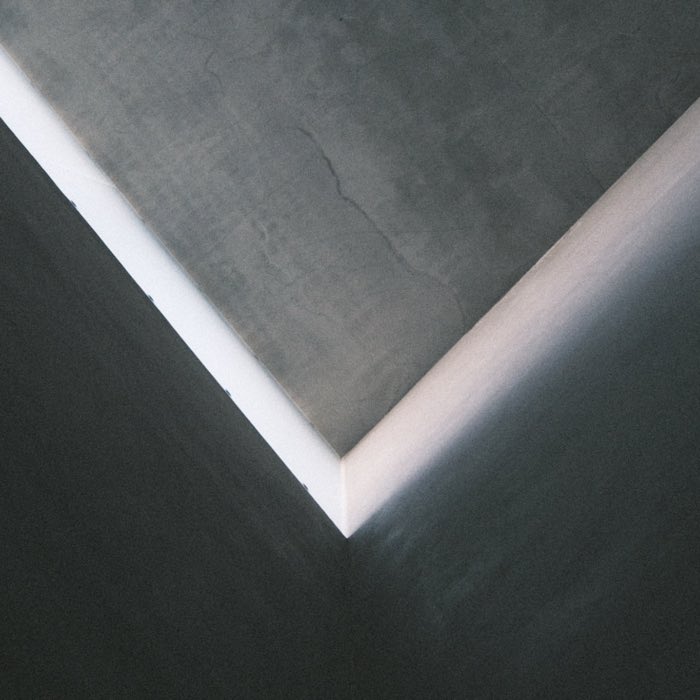





comments